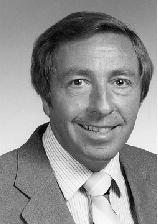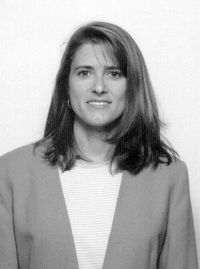

Dr. William G. Duff
Associate Editor

Dawn Trout
Dawn Trout started her EMC career at NASA’s Marshall Space Flight Center (MSFC) in Huntsville, Alabama in 1989. MSFC is the NASA center for propulsion, space transportation, micro- gravity research and optics. During the first year she designed and developed a power supply using SPICE based modeling to examine the EMI characteristics of power supplies. This provided her with a foundation for future EMC work.
After supporting NASA Shuttle-based payloads in the electromagnetic compatibility area, Dawn took the lead NASA EMC role for Space Station Module development in Huntsville. This offered a variety of challenges, especially in the areas of identifying and verifying critical circuits (circuits whose failure to operate properly could cause loss of life or loss of the vehicle).
In 1993, Dawn authored the EMC Design and Prediction Techniques Section of the MSFC EMC Design and Interference Control Handbook. This handbook includes design, analysis, and trouble-shooting techniques to aid electrical engineers to meet the NASA EMI requirements. Dawn and her co-authors (Tony Clark, Matt McCollum, and Ken Javor) received the NASA Research and Technology Award for this effort. She and her teammates are still using the laboratory developed during this activity to work on specialized EMI testing procedures for NASA programs.
After the Space Station Freedom was redesigned into the International Space Station (ISS) which included Russia as a partner, Dawn was the principal negotiator with Russia for the EMC area. This work included performing detailed analytical comparisons of the Russian and US standards, developing test techniques to model the Russian power system and writing and performing EMC procedures so that US payloads could fly on the Mir. This work evolved into negotiations of the EMC requirements for the Russian Segment of ISS and the system level integration analysis and testing. Dawn also performed testing on Russian coatings to assess their bonding conductivity for Space Station interfaces. In addition, she is the lead for developing EMC requirements and analysis for ISS payloads. In 1996, Dawn received the NASA Medal for Exceptional Achievement.
In 1998, she became the team leader for the Electromagnetic Environmental Effects group at MSFC. In this role, she led a team of civil servant and contractor engineers in the areas of EMC, Spacecraft charging, and Lightning for MSFC and NASA programs.
Dawn is currently the lead of an International Organization for Standardization (ISO) standard, “Space Systems – Electromagnetic Compatibility Requirements.” She and her co-leader, Noel Sargent, lead international meetings with representatives from France, Italy, Japan, Russia, Germany, China, the European Space Agency, and the IEC. Also, Dawn is the NASA Liaison in a related activity, the DoD and Industry E3 Standardization Committee, which evaluates commercial standards and makes recommendations about their use on military platforms.
Dawn is active in the NASA Space Environments and Effects (SEE) program managed by Steve Pearson at MSFC. This program is dedicated to developing tech- nologies in the environments area that are needed for future space systems. Dawn has developed concepts and led contracts in the areas of critical circuit verification processes, spread spectrum EMI test techniques, power-line transient test techniques and most recently developing analytical transfer functions for commercial versus military test techniques.
In July of this year she will transfer to Kennedy Space Center at Cape Canaveral, Florida where she will continue her EMC career at the Expendable Launch Vehicle Office. Dawn will also continue her work with the ISO standard and remain active in the SEE program.
Dawn began her education in the nursing field at the Methodist Hospital School of Nursing becoming a registered nurse in 1985. She worked as a nurse while going to school under the Herff Engineering Scholarship for her Electrical Engineering Degree at Memphis State University. She graduated Summa Cum Laude with the Engineering Department Dean’s award in 1989. Dawn continued her education at the University of Alabama in Huntsville while working for NASA and received a Masters Degree in Engineering with a Major in Electromagnetics in 1995. Her thesis was the “Relationship between induced currents from bulk current injection techniques versus radiated electromagnetic field illumination.” In April of 1999, she completed the NARTE exam and became NARTE certified.
Dawn is a member of the IEEE and the EMC Society. She has participated in several EMC Symposia and presented a paper related to bulk current injection (BCI). The IEEE EMC Symposia have allowed her to establish multinational contacts that have been crucial in the development of the ISO standard. She has also been active in side committee meetings at the IEEE EMC Symposia, such as the G-46 committee. She has taken advantage of multiple training opportunities offered by the IEEE in the Huntsville area and plans to become an active member in the Florida area.
Dawn and her husband are looking forward to Florida sunshine and beaches. They enjoy warm weather activities such as swimming, running, boating and biking, as well as a yearly trip to the Rocky Mountains for snow skiing.
Dawn says she will sincerely miss her teammates at MSFC.
Return to Table of Contents...